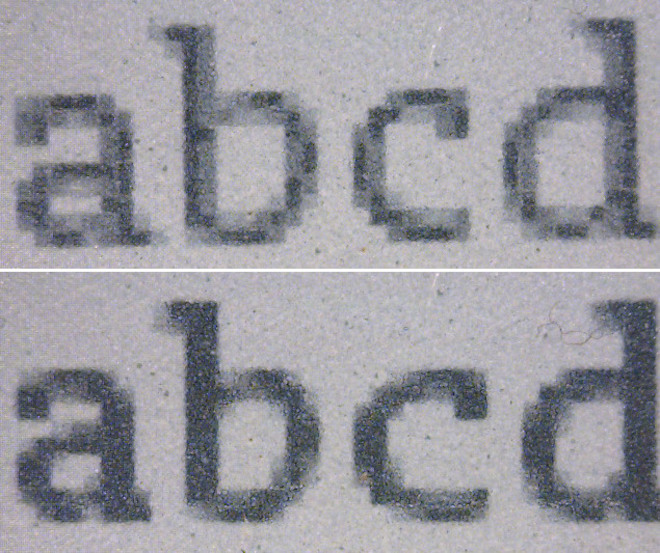Are fonts on Amazon's Kindle 2 too fuzzy?

The newly launched Amazon Kindle 2 e-book reader is certainly an improvement in form factor and features. But does it fall short when it comes to displaying text?
Wired's Gadget Lab notes that the Kindle 2's text rendering leaves, well, something to be desired, with contrast on the type dropping as the font size gets smaller. What's to blame? It may be Kindle 2's new font-smoothing tech. Wired writes:
It's a problem that didn't exist for the first generation of Kindle owners. Kindle 2 has font smoothing algorithms and its screen offers more levels of gray in order to better render text and pictures. But the changes have backfired by making text more difficult to read at smaller sizes. The problem seems especially acute for older users.
The issue's got Amazon forums in a frenzy, wth nearly 500 messages posted in the thread.
In a real stroke of irony, some users were bothered enough to return their Kindle 2 devices, which have 16 shades of gray, to Amazon in exchange for the earlier 2007 model, which only has four shades.
Wired, again:
Then there are the font smoothing algorithms. Without those algorithms, pixels along the edge of a letter would have typically been rendered as black. Instead, they are now available in several shades of gray, as shown in the photographs above. "In conventional backlit displays that works well," Inoue says. "But on a reflective screen like Kindle's, you are just losing contrast rather than enhancing the image."
The algorithms do produce smoother lines but they do not take into account the human psychology of perception, says Inoue. "Most people don't have perfect vision," he says. "What I find is that anything that degrades the contrast is going to make it blurrier."
While it's certain that this only affects a minority of Kindle users, it is in Amazon's best interest to put out the fire before it begins to rage. After all, if Kindle 2 can't be widely accepted by those without perfect vision, what's the point? Amazon clearly is trying to get the device in more hands, and snags like this (plus word of mouth) could send users to competing devices...or back to paperbacks.
